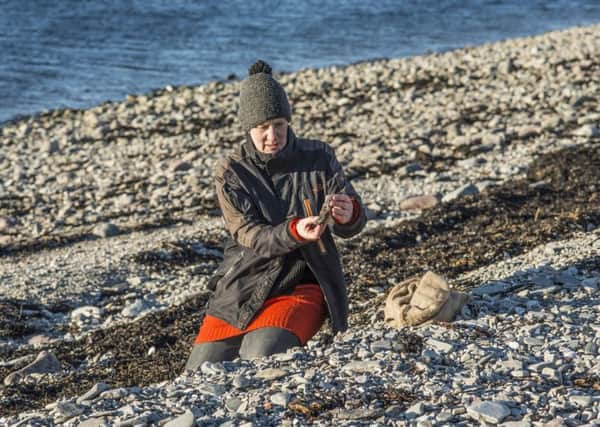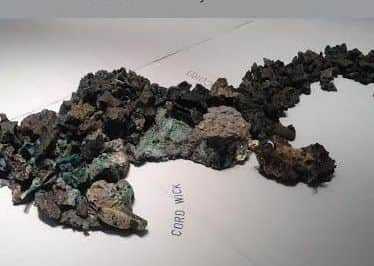Artist exposes plastic pollution on Scottish beaches


Part of Julia’s work uses plastiglomerates - lumps of burnt plastic litter that has melted and bonded with natural beach materials.
Researchers say these ‘rocks’ now form a marker of human pollution on the geologic record and some believe they may survive as future fossils.
Advertisement
Hide AdJulia uses them to make islands and archipelagos which she displays on a giant ‘map’.


The exhibition is being used as a powerful warning about the future of the marine environment.
Julia Barton’s NEO Terra exhibition - at An Talla Solais Gallery in Ullapool - is the culmination of four years of research which began in Ullapool and has taken her to 60 beaches from Gairloch to Cape Wrath, as well as Orkney and Shetland.
Later this year the work will travel to the Scottish Parliament in Edinburgh to highlight the impact of marine plastics to ministers and MSPs.


The centrepiece of the exhibition is a large floor-based ‘map’ featuring islands using ‘rocks’ made from melted plastic.
These ‘plastiglomerates’ are now common on some beaches as people burn the waste they find and Julia has collected thousands of them.
Advertisement
Hide AdNEO Terra also includes an interactive area where visitors are invited to take a closer look at the collected beach samples through microscopes.
Julia hopes the work will make people think about the volume of plastic seeping onto our shores and how long it will remain there damaging the environment.
Advertisement
Hide AdShe said: “What you actually see on beaches is just the tip of the iceberg and nothing compared to the unseen particles which break down into sand grains.
“The lifespan of these materials outlives us, our children and our grandchildren. It’s insidious and we need to address how it got there.”
Julia has worked on educational projects helping school pupils to survey beaches and raising awareness about what they find and how it got there. Some have been inspired to write to pharmaceutical companies and politicians requesting change.
In February Johnson & Johnson joined some of the major supermarkets by bowing to public pressure to replace plastic stems in cotton buds with paper. The move will prevent more plastic reaching the seas and harming marine life.
More than 300 million tons of plastic are produced globally each year and 10% ends up in the sea. It’s estimated by some reports that there is now a 1:2 ratio of plastic to plankton and that plastic will outweigh fish by 2050 if the problem is left unchecked.
Working with communities has always been a strong feature of Julia’s approach and she’ll be taking part in a series of events during the exhibition including a walk along Isle Martin beach as part of the upcoming Isle Martin Festival and a World Ocean Day event in early June.
Advertisement
Hide AdJulia hopes her creative perspective on a serious environmental issue might connect with new audiences.
She said: “I’d really like to take the exhibition to other coastal areas and deliver the educational programme there. I’m delighted to have the opportunity to present the information I have collected to ministers and environmental organisations.
Advertisement
Hide Ad“Art can successfully engage with the important issues of the day and make a difference.”
NEO Terra by Julia Barton opened this month at An Talla Solais Gallery, The Caledonian Hotel (West Argyle Street entrance), Ullapool.
The exhibition will be open daily from 10am to 5pm until June 30th. The exhibition is made with support from The National Lottery through Creative Scotland.
